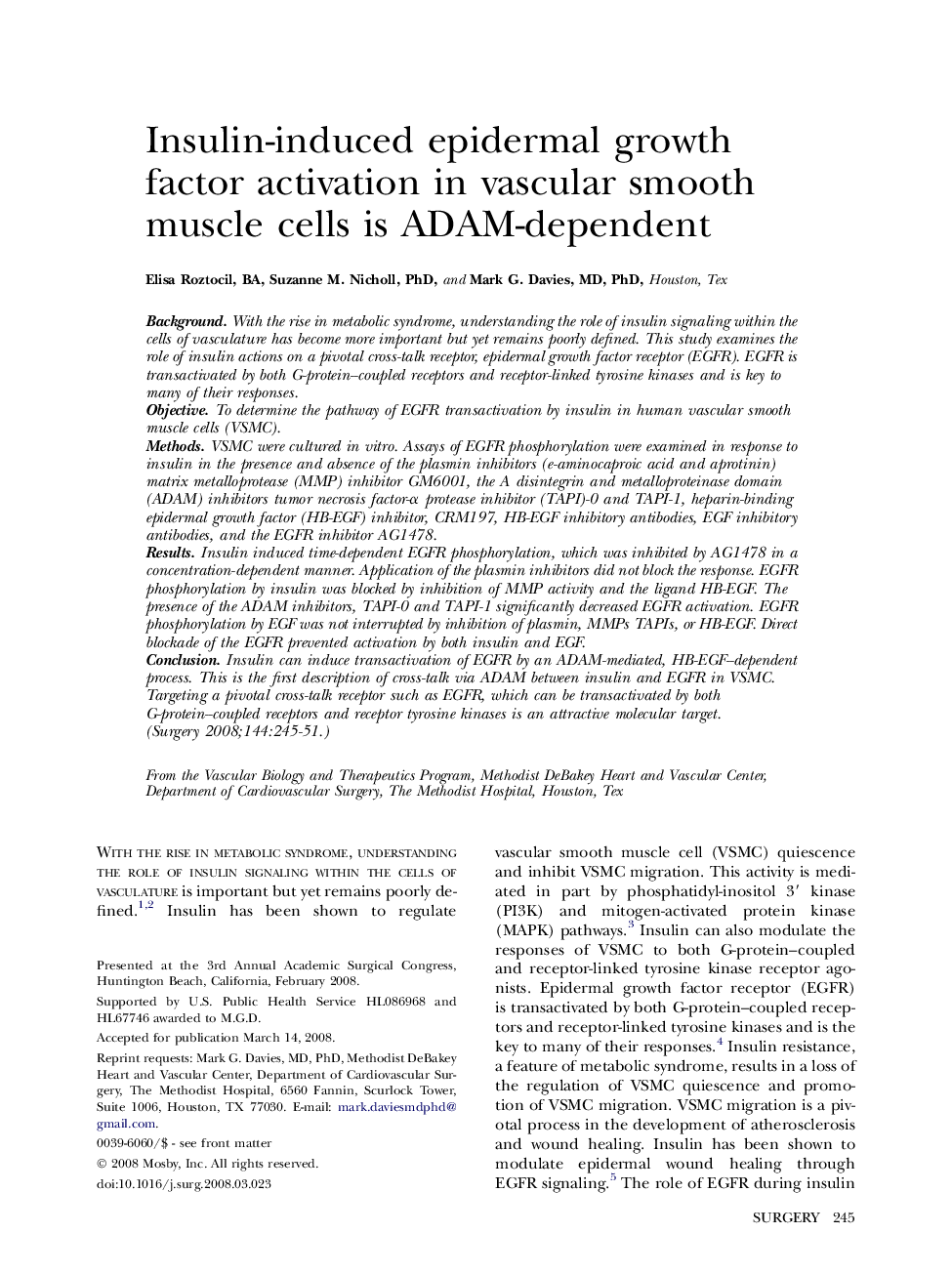| Article ID | Journal | Published Year | Pages | File Type |
|---|---|---|---|---|
| 4309460 | Surgery | 2008 | 7 Pages |
BackgroundWith the rise in metabolic syndrome, understanding the role of insulin signaling within the cells of vasculature has become more important but yet remains poorly defined. This study examines the role of insulin actions on a pivotal cross-talk receptor, epidermal growth factor receptor (EGFR). EGFR is transactivated by both G-protein–coupled receptors and receptor-linked tyrosine kinases and is key to many of their responses.ObjectiveTo determine the pathway of EGFR transactivation by insulin in human vascular smooth muscle cells (VSMC).MethodsVSMC were cultured in vitro. Assays of EGFR phosphorylation were examined in response to insulin in the presence and absence of the plasmin inhibitors (e-aminocaproic acid and aprotinin) matrix metalloprotease (MMP) inhibitor GM6001, the A disintegrin and metalloproteinase domain (ADAM) inhibitors tumor necrosis factor-α protease inhibitor (TAPI)-0 and TAPI-1, heparin-binding epidermal growth factor (HB-EGF) inhibitor, CRM197, HB-EGF inhibitory antibodies, EGF inhibitory antibodies, and the EGFR inhibitor AG1478.ResultsInsulin induced time-dependent EGFR phosphorylation, which was inhibited by AG1478 in a concentration-dependent manner. Application of the plasmin inhibitors did not block the response. EGFR phosphorylation by insulin was blocked by inhibition of MMP activity and the ligand HB-EGF. The presence of the ADAM inhibitors, TAPI-0 and TAPI-1 significantly decreased EGFR activation. EGFR phosphorylation by EGF was not interrupted by inhibition of plasmin, MMPs TAPIs, or HB-EGF. Direct blockade of the EGFR prevented activation by both insulin and EGF.ConclusionInsulin can induce transactivation of EGFR by an ADAM-mediated, HB-EGF–dependent process. This is the first description of cross-talk via ADAM between insulin and EGFR in VSMC. Targeting a pivotal cross-talk receptor such as EGFR, which can be transactivated by both G-protein–coupled receptors and receptor tyrosine kinases is an attractive molecular target.
